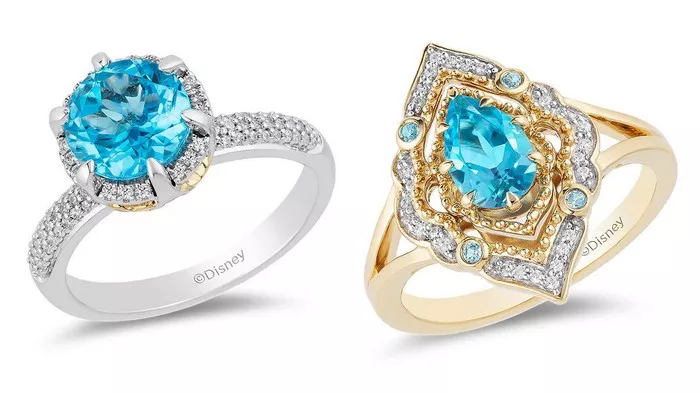Diamonds have long been synonymous with eternal love and commitment, making them the quintessential choice for engagement rings in modern times. Yet, the journey of diamonds from rare gemstones to cultural icons spans centuries and is intertwined with historical, economic, and marketing forces that shaped their popularity. Delving into this evolution provides insights into how diamonds came to symbolize enduring romance and luxury in engagement ring traditions.
Early Beginnings: Diamonds as Treasures of the Elite
The fascination with diamonds dates back thousands of years to ancient civilizations where they were revered as symbols of power, wealth, and divine protection. Diamonds were mined in India as early as the 4th century BCE, and their rarity and brilliance captivated rulers and aristocrats. They were not initially associated with romantic love but rather adorned crowns, swords, and religious artifacts, signifying strength and invincibility.
In ancient Roman and Greek societies, diamonds were admired for their hardness and perceived mystical properties, believed to ward off evil and bestow courage upon warriors. However, their use in personal adornment, including jewelry, was limited to the wealthiest classes due to their scarcity and the difficulty of mining and cutting techniques at the time.
Renaissance and the Symbolism of Diamonds
During the Renaissance period in Europe, diamonds began to take on new meanings beyond material wealth. The revival of art, culture, and literature sparked a renewed interest in romance and courtly love, influencing the symbolism attached to precious gemstones. Diamonds, with their unmatched brilliance and durability, came to symbolize purity, strength, and eternal love—qualities that resonated with the ideals of chivalry and aristocratic virtues.
Diamonds adorned the jewelry of royalty and nobility, often set in elaborate designs that showcased their beauty and rarity. They became prized not only for their aesthetic appeal but also for the emotional symbolism attached to them, marking a subtle shift towards their association with romantic affection and marital bonds.
Discovery of Diamond Mines and Global Influence
The discovery of diamond mines in Brazil in the 18th century and later in South Africa in the mid-19th century revolutionized the availability and accessibility of diamonds worldwide. These discoveries led to an increase in the supply of diamonds, making them more attainable for the burgeoning middle class in Europe and America. As diamonds became more abundant, their allure as symbols of status and luxury grew, solidifying their position in the realm of fine jewelry and special occasions.
De Beers and the Marketing of Diamonds
The pivotal moment in the popularization of diamonds for engagement rings can be attributed to the strategic marketing efforts of De Beers Consolidated Mines Ltd. Founded in the late 19th century by Cecil Rhodes, De Beers controlled a significant portion of the world’s diamond production by the early 20th century. In the 1930s, amidst the economic downturn of the Great Depression, De Beers sought to stimulate demand for diamonds by associating them with romance and marriage.
The iconic “A Diamond is Forever” campaign, launched by De Beers in 1947, cemented diamonds as the ultimate symbol of everlasting love and commitment. The campaign promoted the idea that a diamond engagement ring was not just a luxury item but an essential expression of love and commitment—a sentiment that resonated deeply with consumers. Through strategic advertising in magazines, movies, and later television, De Beers successfully ingrained diamonds into the cultural consciousness as an integral part of the marriage proposal ritual.
See Also: Can We Wear Diamond Ring Daily?
Hollywood Influence and Cultural Shifts
The glamour of Hollywood during the mid-20th century further propelled the popularity of diamonds in engagement rings. Celebrities and royalty showcased extravagant diamond rings, setting trends that influenced consumer preferences worldwide. Iconic engagements, such as Grace Kelly’s with Prince Rainier of Monaco and Elizabeth Taylor’s multiple marriages adorned with spectacular diamonds, reinforced the association between diamonds and romance in the public imagination.
As Hollywood celebrities became trendsetters, the desire for diamond engagement rings transcended economic and social boundaries, becoming a symbol of aspirational romance for couples of all backgrounds. The media’s fascination with celebrity engagements and their diamond rings further perpetuated the cultural significance of diamonds as the ultimate expression of love and commitment.
Diamonds in the 21st Century: Evolution and Diversification
In recent decades, the popularity of diamond engagement rings has continued to evolve in response to shifting consumer preferences and societal values. While traditional round brilliant-cut diamonds remain timeless favorites, there has been a notable increase in demand for fancy-shaped diamonds such as oval, pear, and cushion cuts. These unique shapes offer couples the opportunity to personalize their rings while maintaining the enduring brilliance and symbolism of diamonds.
Ethical considerations have also influenced the diamond industry, prompting increased transparency and accountability in sourcing practices. Initiatives like the Kimberley Process Certification Scheme aim to prevent the trade of conflict diamonds, ensuring that diamonds are sourced responsibly and ethically. Additionally, lab-grown diamonds have emerged as a sustainable alternative to mined diamonds, appealing to eco-conscious consumers seeking to minimize their environmental impact without compromising on quality or beauty.
Conclusion
The journey of diamonds from ancient treasures to modern symbols of love reflects a complex interplay of history, economics, and cultural influences. From their origins as rare gemstones coveted by royalty to their ubiquitous presence in engagement rings worldwide, diamonds have evolved alongside human aspirations and values. Their enduring allure lies not only in their unmatched beauty and durability but also in the emotional symbolism they carry as tokens of love, commitment, and enduring partnership.
As we look to the future, the popularity of diamonds in engagement rings is likely to continue evolving in response to changing consumer preferences, technological advancements, and societal trends. Yet, their status as timeless symbols of romance and luxury remains steadfast, transcending generations and cultural boundaries. Whether set in traditional designs or innovative settings, diamonds continue to captivate and inspire, embodying the enduring promise of love celebrated through the ages.

